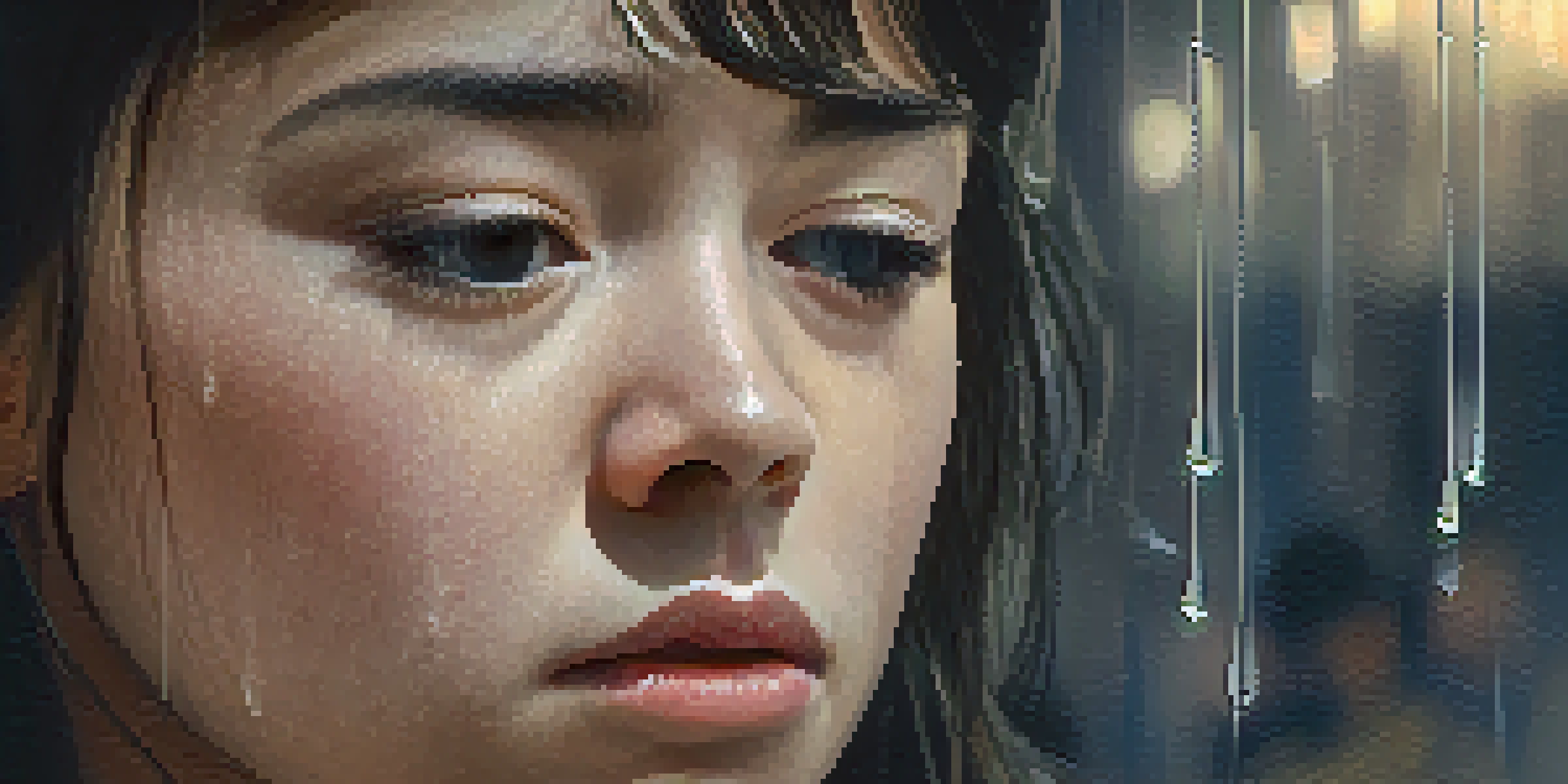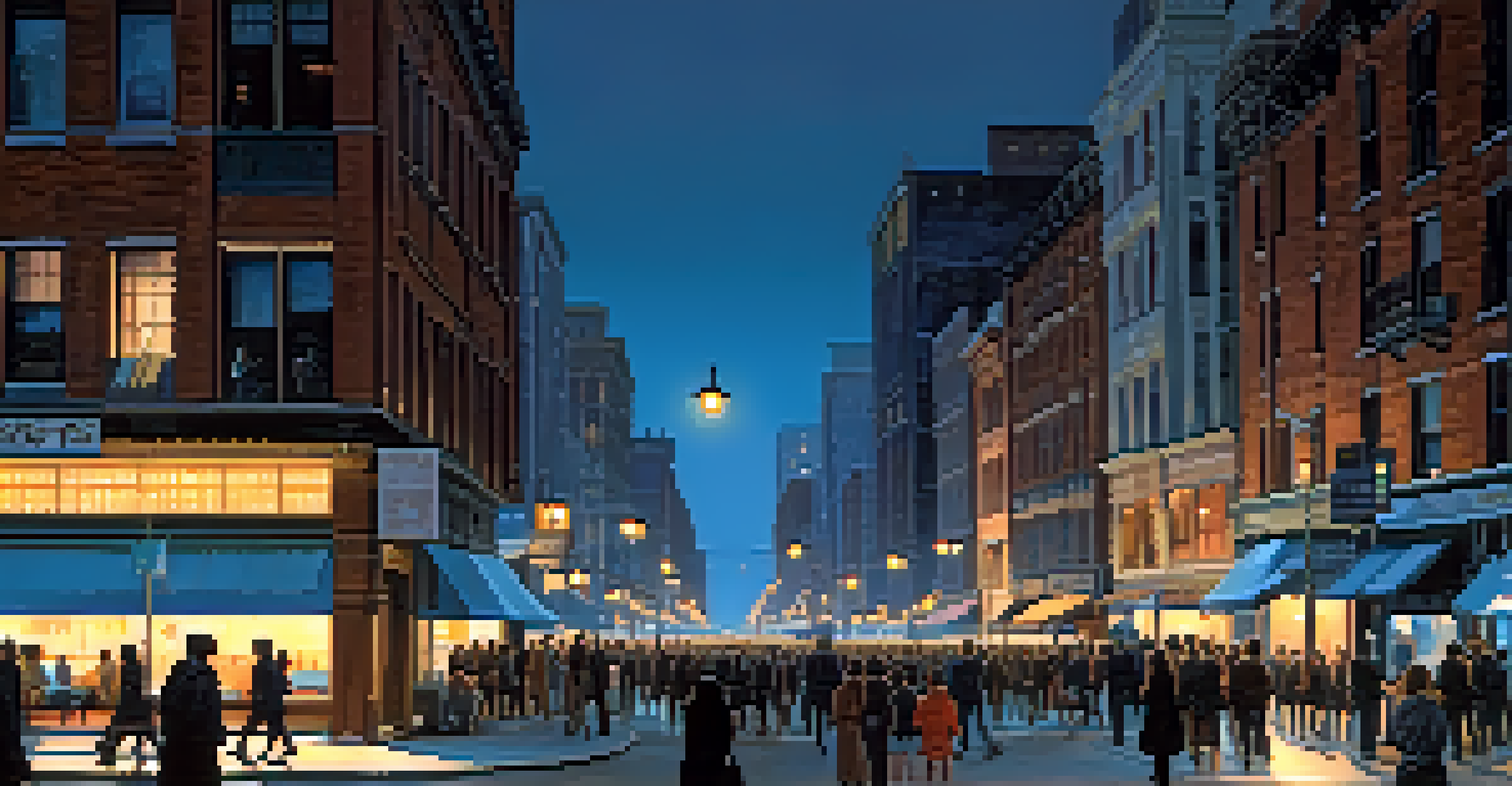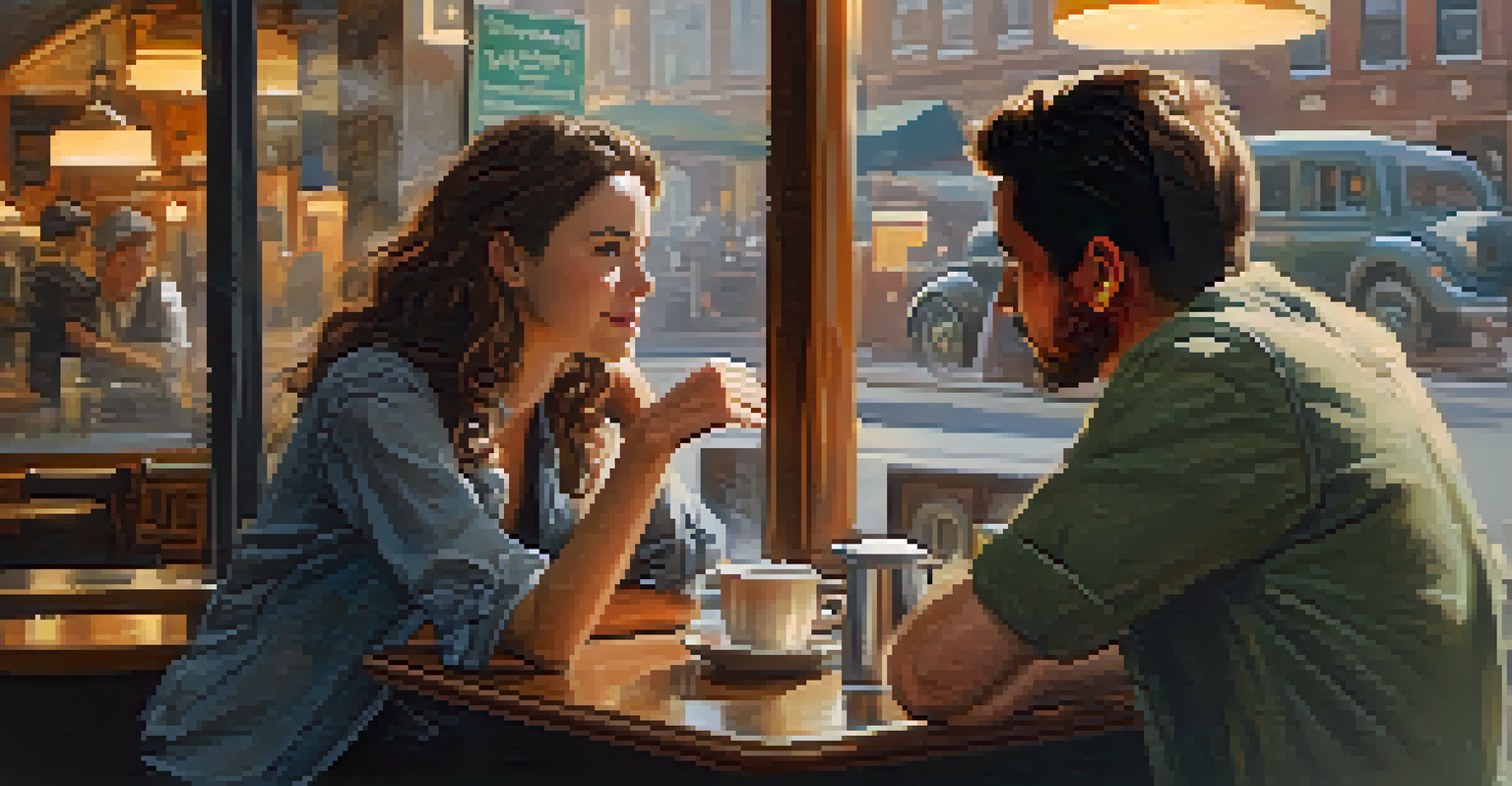Shot Types: Varied Angles That Enhance Narrative Impact

Understanding the Importance of Shot Types in Film
Shot types are the foundation of visual storytelling, shaping how audiences perceive the narrative. Each shot conveys emotions, context, and character dynamics, acting as a silent communicator that guides viewer interpretation. By carefully choosing shot types, filmmakers can manipulate the viewer's perspective, drawing them deeper into the story.
The camera is a powerful instrument for revealing the truth. It captures moments that can evoke profound emotions and convey deep narratives.
For instance, consider a close-up shot that captures a character's subtle facial expressions. This technique can evoke empathy, allowing the audience to connect with the character's internal struggle. In contrast, a wide shot may be used to establish the setting, providing context that enhances the narrative's depth.
Ultimately, understanding shot types is crucial for any filmmaker or content creator looking to tell compelling stories. By mastering these techniques, creators can elevate their visual narratives, making them more engaging and impactful.
Close-Up Shots: Capturing Emotion and Detail
Close-up shots bring viewers face-to-face with characters, allowing them to experience emotions intimately. These shots can reveal subtle expressions, such as a fleeting smile or a furrowed brow, which might go unnoticed in wider frames. This emotional connection often prompts viewers to feel sympathy, anger, or joy, depending on the scene.

Imagine a scene where a character receives heartbreaking news; a close-up can capture the tear rolling down their cheek, leaving a lasting impression on the audience. It’s a powerful reminder of how a simple angle can dramatically affect viewer engagement. By zooming in on the character's face, filmmakers create an intimate moment that resonates deeply.
Shot Types Shape Visual Storytelling
Different shot types convey emotions and context, guiding audience interpretation and enhancing narrative depth.
In essence, close-up shots are invaluable tools for storytelling, emphasizing pivotal moments that define character arcs and relationships. They invite viewers to not just watch, but to feel and empathize with the characters on screen.
Wide Shots: Setting the Scene and Context
Wide shots, or long shots, provide a broader view of the setting, situating characters within their environment. This type of shot is essential for establishing context and helping viewers understand the overall dynamic of a scene. It’s like stepping back to see the whole picture before diving into the details.
In filmmaking, the shot is the basic building block of visual storytelling, and each shot type plays a unique role in shaping the audience's experience.
For example, a wide shot of a bustling cityscape can convey a sense of isolation for a character walking alone. The contrast between the individual and the sprawling city emphasizes their loneliness, enhancing the narrative's emotional impact. Such shots can also highlight the relationship between the characters and their surroundings.
By using wide shots strategically, filmmakers can enrich storytelling by providing context that deepens the audience's understanding. This foundational technique sets the stage for more intimate moments that follow, creating a seamless flow in the narrative.
Medium Shots: Balancing Detail and Context
Medium shots strike a balance between close-ups and wide shots, capturing subjects from the waist up. This type of shot allows for character interaction while still providing enough background to maintain context. It’s like having a conversation with someone while still being aware of your surroundings.
Consider a dialogue scene between two characters: a medium shot can showcase their body language and expressions while still hinting at the setting. This helps convey not just what they’re saying, but also the emotions behind their words. The audience feels more engaged as the characters seem more relatable and grounded.
Close-Ups Foster Emotional Connection
Close-up shots allow viewers to experience characters' emotions intimately, creating empathy and engagement.
Medium shots are versatile and often used in various genres, serving as a bridge between the emotional and the contextual. By incorporating them thoughtfully, filmmakers can maintain the narrative's flow while enhancing character relationships.
Over-the-Shoulder Shots: Fostering Connection
Over-the-shoulder shots create a sense of intimacy and perspective by showing one character from behind another. This technique places viewers in the shoes of a character, making them feel like a part of the conversation. It’s an effective way to foster connection between the audience and the characters.
Imagine a tense conversation where one character is revealing a secret. An over-the-shoulder shot can make viewers feel the weight of the moment, as if they are eavesdropping on a private exchange. This angle enhances the drama and draws viewers closer to the narrative.
Using over-the-shoulder shots can enhance character dynamics, allowing viewers to experience moments of tension or vulnerability. This technique not only deepens engagement but also enriches the storytelling process by immersing the audience in the emotional landscape.
Bird’s Eye View: Offering a Unique Perspective
Bird’s eye view shots provide a high-angle perspective, allowing audiences to see the scene from above. This angle can create a sense of disorientation or vulnerability, emphasizing a character's isolation or the scale of their surroundings. It’s akin to viewing a chessboard, where every piece's position is clear.
For instance, a bird’s eye view of a crowded battlefield can illustrate chaos and confusion, highlighting the struggles of individual characters. This perspective can transform a standard scene into a powerful visual statement, drawing attention to the larger themes at play.
Variety Enhances Narrative Structure
Using a mix of shot types strategically builds rhythm in storytelling, making the narrative more dynamic and compelling.
Incorporating bird’s eye views strategically can enhance storytelling by presenting situations in ways that ground-level shots cannot. This unique perspective urges viewers to think critically about the narrative, adding layers of meaning to the visual experience.
Point of View Shots: Immersing the Audience
Point of view (POV) shots immerse viewers in a character’s experience by showing what they see. This technique allows the audience to see the world through the character’s eyes, creating a deeper emotional connection. It’s like wearing glasses that allow you to experience another person's reality.
Imagine a horror movie where a character is slowly creeping through a dark house. A POV shot can heighten tension by making viewers feel the character’s fear and uncertainty. This technique transforms passive watching into an active experience, engaging the audience on a visceral level.

POV shots are particularly effective in creating empathy, as they allow viewers to witness events from a personal perspective. By employing this technique, filmmakers can craft narratives that resonate more deeply, ensuring that audiences remain invested in the characters’ journeys.
Using Shot Types to Enhance Narrative Structure
Incorporating various shot types effectively can significantly enhance narrative structure, guiding viewers through the story. By alternating between close-ups, wide shots, and medium shots, filmmakers can create a rhythm that keeps audiences engaged. Each shot serves a purpose, whether to build tension, convey emotion, or provide context.
For example, a well-structured scene might begin with a wide shot to establish the setting, transition into a medium shot for character interaction, and then close with a close-up to highlight emotional stakes. This layering of shots allows viewers to experience the narrative in a more dynamic way, making the story feel richer and more compelling.
Ultimately, understanding and skillfully using shot types is essential for anyone looking to tell impactful stories. By mastering these techniques, filmmakers and content creators can craft narratives that resonate deeply with audiences, ensuring that their stories leave a lasting impression.